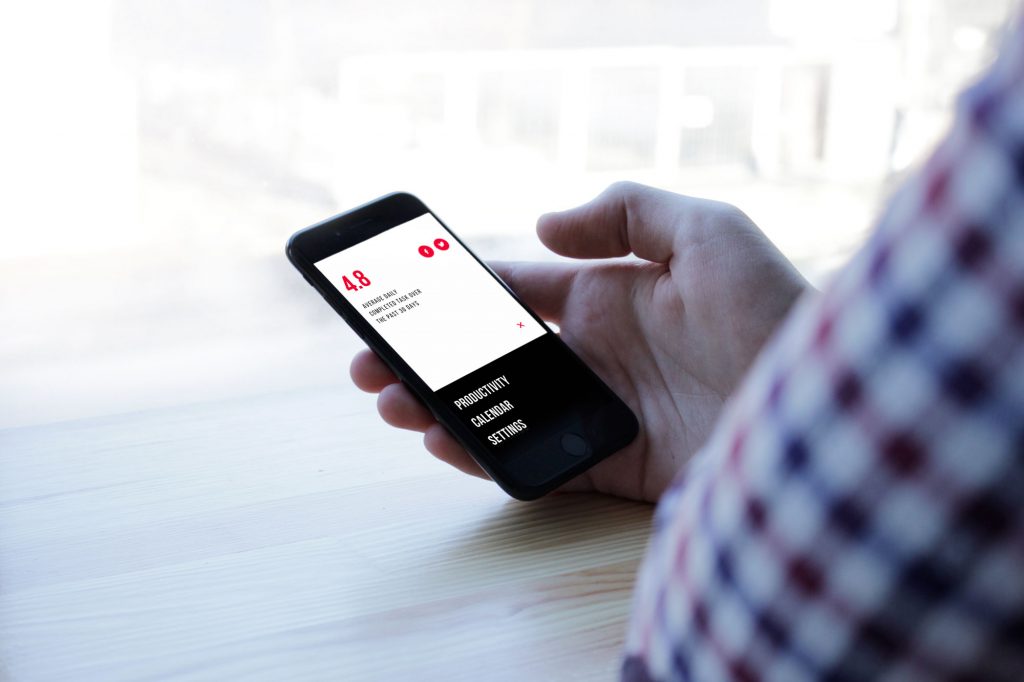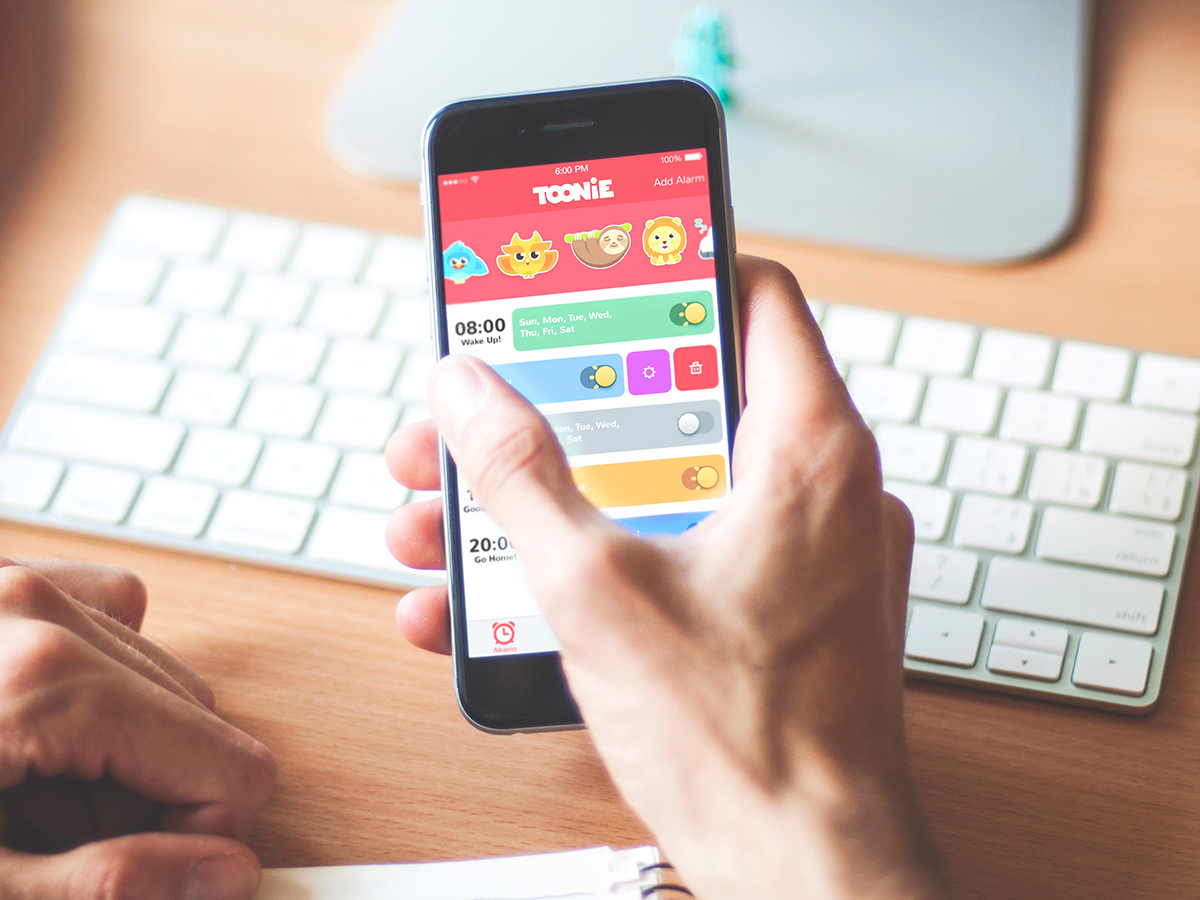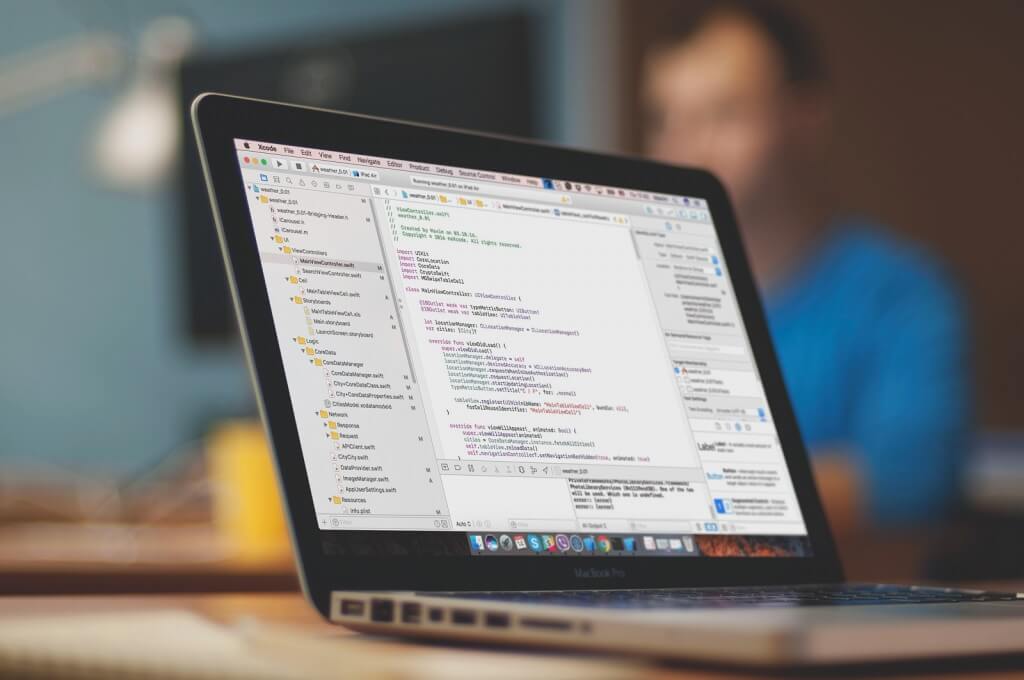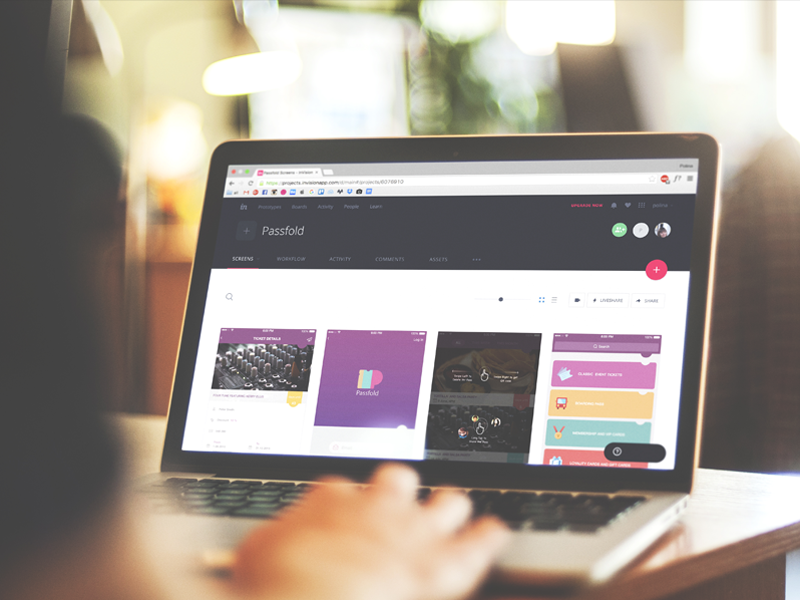Mobile technology and smart devices have already brought massive and significant changes in human behavior, communication, a way of thinking and lifestyle. In fact, the boom of apps popularity can be seen in plenty of industries, among which we can easily sort out some noticeable ones such as Media (magazines and newspapers), Travel (maps), Medicine (patient records), Finance (apps for real-time trading), Education (translators and dictionaries) and Social (games and social media platforms). With the steady and obvious progress of the sphere, mobile and web apps are definitely going to become more critical for personal, professional and business success and efficiency. So, creating and launching a new application, all sides of its production should test the solutions and environment as well as the practical quality of design and development outcome. Extensive practice we have got here in Tubik proves that this is the well-lit way to providing users with positive experience and helpful products.
Testing is vital for product quality
In our previous article, devoted to the full cycle of creating a mobile application, we have already mentioned the great part of testing in providing high quality products, able to solve problems and improve lives. As it was outlined in general terms, testing is one of the crucial phases of the entire app design and development process: it helps to reveal bugs before the app is brought out to actual users. Practice shows that in the majority of cases, users abandon the app if it has functionality problems, no matter how promising and engaging it seems. Vice versa, even the simplest apps can be successful for commerce, business, advertising and other aims if they work correctly and efficiently, according to target audience’s expectations and solving their problems.
Testing doesn’t mean that designers or developers do not provide the upper quality. To set the analogy, the fact that every book, magazine or newspaper issue goes through editor’s eye doesn’t say that journalists or writers are not talented and qualified. Different specialists have different goals and skills in the process to increase general productivity and efficiency, and it works the same way for design and development of mobile apps. Supposing that developers have done a great job and made no mistakes, the task of testing is not only finding errors. Quite the opposite, it helps to understand the quality of the app and find the way to improve via real interactions.
Peter Drucker once said “Quality in a service or product is not what you put into it. It is what the client or customer gets out of it.” In the majority of cases, if users see that anything in the app is broken or it constantly takes large loading time preventing them from the quick accomplishment of the task at hand, the risk is really high that they will bounce it and never come back. That’s why testing phase is the hidden hero of mobile app development.
Today we are going to concentrate more on the perspective of testing mobile apps, as websites testing has its own specific features worth another article. So, let’s review the basic steps and aspects important for effective digital product testing.

Start with the type of the app
Mobile app testing has plenty of challenges based on multiple factors: there are some compromise decisions testers or developers need to consider and choices they need to make on combinations of different techniques and methods to be used. One of the aspects to think about is the nature of the app itself directly influencing the process and limits of testing. In this perspective, the following basic categories of the apps should be mentioned.
Native apps. The apps of this sort are created specifically for one platform, aka operating system. They can take full advantage of all the device features such as the camera, the list of contacts, the flashlight, the accelerometer, the compass or others, and are installed via an app store (Google Play, Apple’s App Store, Microsoft store, etc.).
Mobile web apps. They are mobile-optimized websites that look and feel like native apps, still they are run by a web browser.
Hybrid apps. This type representatives provide the mix of native apps and web apps. Like native apps, they are installed in app stores and can take advantage of the numerous features available on the device. As well as web apps, they rely on HTML being rendered in a web browser.

The type of the app under construction directly influences all creative stages from UX wireframing to final check of all the code. Different operational systems set their own guidelines and recommendations on design solutions and performance, development tools and restrictions. Neglecting those limitations and rules, creators could fail to submit the app to open use and turn all the creative process into wasted time and effort.
Plan the testing levels
Starting actual work over the app, creative and production team needs to consider a testing plan combining different testing levels. Testing is not the process taken as one single stage or action: it is spread via different stages. Schematically, this process can develop in vertical and horizontal directions. The vertical dimension is presented with testing levels and usually deals with going deeper to the code and functionality from separate units to the whole app, its connection with the server if needed, and its technical correspondence to the requirements. Horizontal dimension deals with different aspects of app performance and user experience.
Taking the testing levels to account, their basis is a variety of tests grouped according to the stages when they are used in the development process, or by the level of specificity of the test. The main task of testing levels is to identify missing areas and prevent overlap and repetition between the development phases. Let’s briefly describe the various levels of testing.
Unit testing. This testing is commonly done by the developers to make sure that their code is working correctly: they test the sections of code like classes, functions, interfaces, etc.
Integration testing. Integration testing is done when particular units are integrated with each other, with the aim to test the behavior and functionality of each unit after integration. This testing level is usually carried out by a software testing engineer. There are a few types of integration testing such as big bang integration testing, top down and bottom up.
System testing. Here the name says everything: at this level, all the components of the app are tested as a system in order to ensure that the product at the pre-launch stage meets the specified requirements. As the app is almost ready, it can be tested in the environments really close to the actual in which users will get their experience once it is deployed.
Acceptance testing. The main objective of this testing level is to evaluate whether the app system complies with the user requirements and whether everything is ready for release.

Define the types of testing
All aspects of the app usage should be tested. Designers, developers and testers will need to check it across different devices as the points like screen resolution, processors, battery life and memory are different and can significantly affect on the efficiency and performance of the app, functionality, handling and loading time, as well as UX and UI solutions.
Among the variety of types, applied to test the mobile app at different stages of its creation, we should definitely mention the following list.
Usability testing. It is carried out from the early stages of app creation to verify if the app fulfills the established objectives and tasks getting a good response from users. The primary focus of this testing is easy and quick use of an app, simple onboarding and user’s satisfaction with the entire experience. For higher efficiency and productivity of general creative flow, this type of testing should start much earlier than any single line of code will be written, from the first schemes and transitions put into UX wireframes.
Installation testing. At the initial stage of installation, the app should add required software to the device automatically. And uninstalling, it should remove all the available content and databases from the device which are used by the app. So, this type of testing checks that the install/uninstall flow goes properly.
Functional testing. It is the most basic test for any app to ensure that it is working according to the defined requirements and there are no functions missed in the process of interaction. Functional testing mainly includes finding possible specific bugs of the device or navigation issues of the app. This type of testing should be done at the primary stages of development. It enables developers or testers to check and measure database or network queries with response times, crashes and memory issues.
Performance testing. Rather a stressful part of any app testing is performance test revealing the omissions which left unnoticed during functional and user interface testing. This testing is required to be done on the actual device only so it means the whole app is coded t this stage. This type covers client-side, server and network performance. For example, it checks the performance specifications and behavior of the app under certain conditions such as low battery, bad network coverage, low available memory and etc.
Interruption testing. An app may face various interruptions being in active mode, such as incoming calls or network coverage outage and recovery. This kind of testing shows what the app will do in this variety of cases. The common types of interruptions are:
- Incoming and Outgoing calls, SMS or MMS and different notifications
- Low memory warning
- Cable insertion or removal
- Network outage or recovery
- Media Player on/off
- The device power cycle, such as low battery notification.
Memory testing. This type checks that each app maintains optimized memory usage throughout surfing. As mobile devices have definite limits of available memory, this testing is crucial for the appropriate product functioning.
Security testing. It checks the vulnerability of the app to hacking, authentication and authorization policies, data security, session management and other security standards. The fundamental objective of security testing is to ensure that the app data and networking security requirements are met according to standards.

Don’t forget to test design
One of the huge mistakes that could be done about testing it planning this part not earlier than the development stage starts. Obviously, the product getting live via code presents a wider perspective of testing its actual functionality and performance. Still, we should remember that any digital product is not just code – it is the set on user interactions which should be thought-over and designed thoroughly with the target audience in mind. Therefore, testing should take its first steps at the stage of wireframing to check if all the elements take their places, communicate to users, provide them with feedback from the system and what is more, achieve the goals and solve users’ pains.
Numerous prototyping tools enable to simplify and speed up the process of testing user interface so that developers obtained the verified version of design not taking major design alterations in the process of development. This is the efficient way to optimize the general creative flow and provide maximum efficient outcome at every stage. Prototyping gets testing sides, be it client, designer or even potential users, closer to real interaction with the concept of the future interface. Prototypes should not be seen as the analog of the final product as they aren’t those. Their main aim is to check the correctness and appropriateness of the design solutions way before they will be transferred to developers.
The most effective point to involve prototyping for testing design is the step between UX wireframing and UI design. The prototypes on UI stage can also be created for the presentation of application general looks rather than for testing and improving its functional features. Still, it’s crucial that usability should be thoroughly checked first of all at the UX stage, otherwise it will be much harder to change inefficient solution after having accomplished a lot of work on UI and then development.
All the numerous aspects of design testing are definitely worth a separate article which will continue this topic on our blog very soon.

Check the code thoroughly
When the design is transformed into code, the developers and testers need to make sure that all the quality and performance nuances are considered and included. Pointers in this area are testing on actual devices and simulators. Testing on devices is proceeded on the actual handset where the app is installed, run and tested. Testing in simulator applies the software that can accurately imitate a mobile phone.
Simulator testing is useful at the primary stages of development as it allows quick and efficient checking the app, but it doesn’t fully measure performance and usability which should have their healthy dose of actual human testing. Still, automated testing got really popular now because it is effective, cheap and quite reliable. iOS Simulator, as well as testing tools such as Appium, Frank, Calabash and others, are available to support moving the app through the testing process and point out the issues requiring attention.
Continuous testing at all stages lays the strong foundation for keeping small bugs from becoming major issues later on. The final testing is conducted on actual devices so that crashes and hangings could be identified. Testing on device is obligatory for every app as it provides developers with actual data on the app behavior in different environments.
Test and measure after launch
Another mistake that should be avoided is stopping testing after the product is launched. Contrarily, testing will get even more diverse and comprehensive as it will inform the sides maintaining the app viability and efficiency about behavior, problems and preferences of real users. This information is the direct route to product improvements providing users with the updates they really need and want.

Mobile technology is transforming the way of using devices. Smartphones and tablets of all kinds are rapidly becoming the valid method of interaction between consumers and businesses. People use mobile apps to connect socially, find information, order and track goods, book places and set appointments and do hundreds of other operations that improve their lives regularly. It is important to build an app with all features and functionality that are required. If the app is created without an effective testing plan, users are likely to come across unexpected bugs and errors. In the modern world with tough and growing competition in this field, the risk is high that they will quickly lose interest to the app while thoughtful testing and analysis is the solid way to avoid this risk.
Recommended reading
Diverse issues of applying testing at different stages of creating digital products have been an object of professionals’ attention lately. Here is the collection of recommended sources for further reading for those who would like to read more on the theme.
Testing Strategies and Tactics for Mobile Applications
Mobile: Native Apps, Web Apps, and Hybrid Apps
Beginner’s Guide to Mobile Application Testing
Mobile Testing: Complete Guide to Test your Mobile Apps
17 Strategies for End to End Mobile Testing on both iOS and Android
Welcome to read The Ultimate Guide to Creating a Mobile Application






